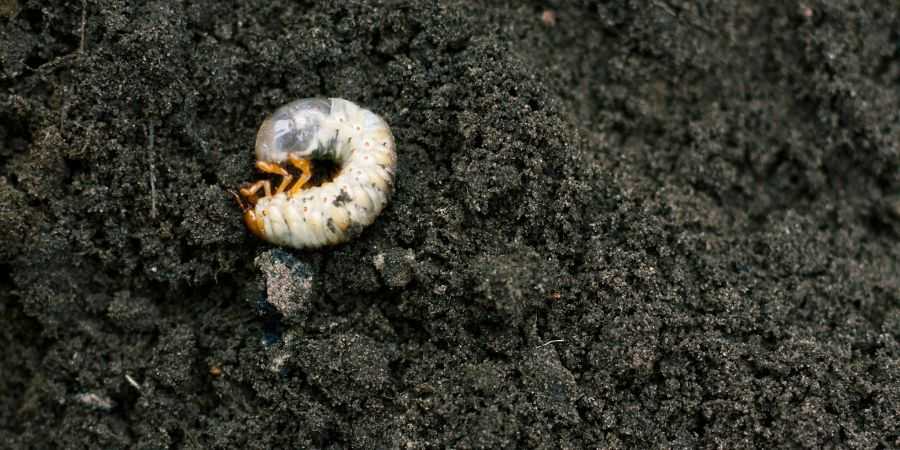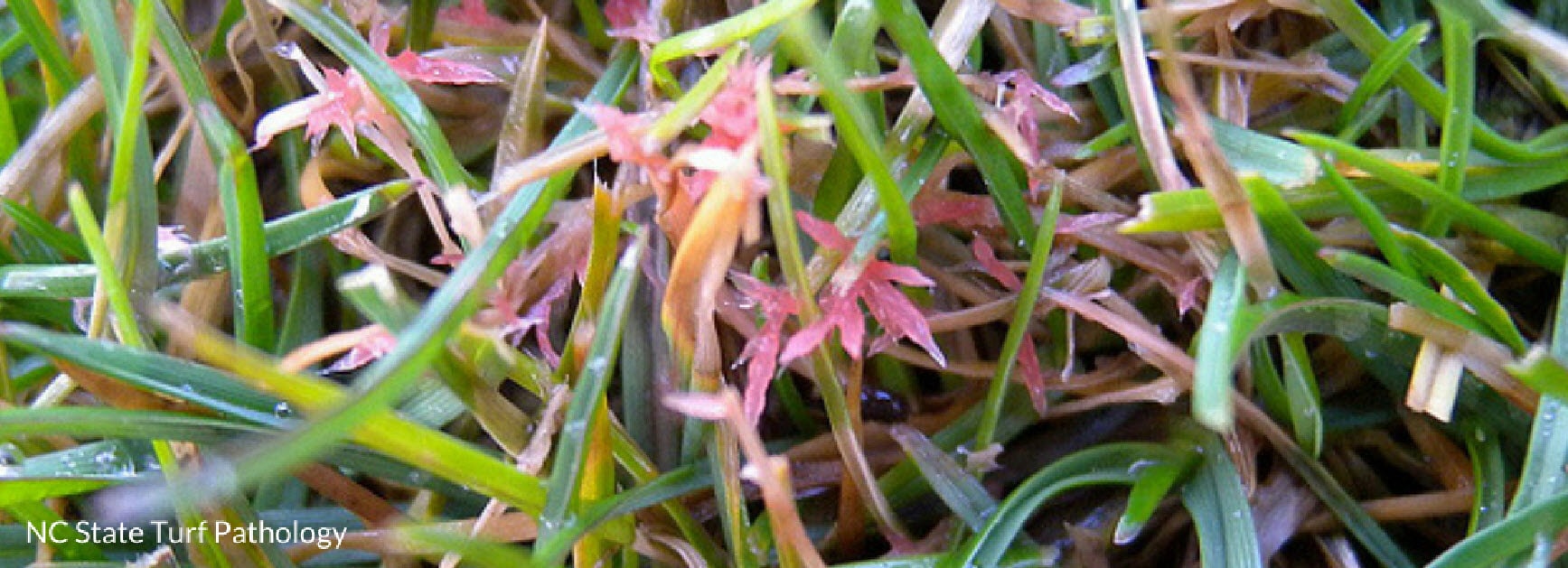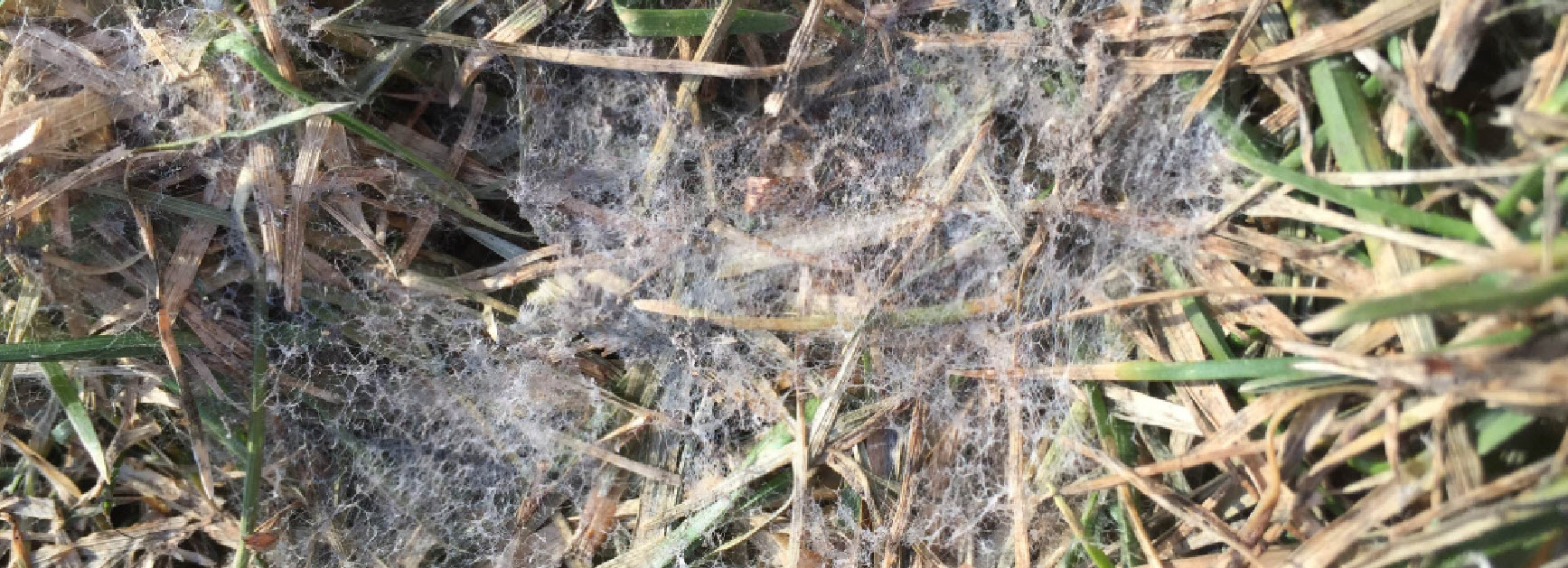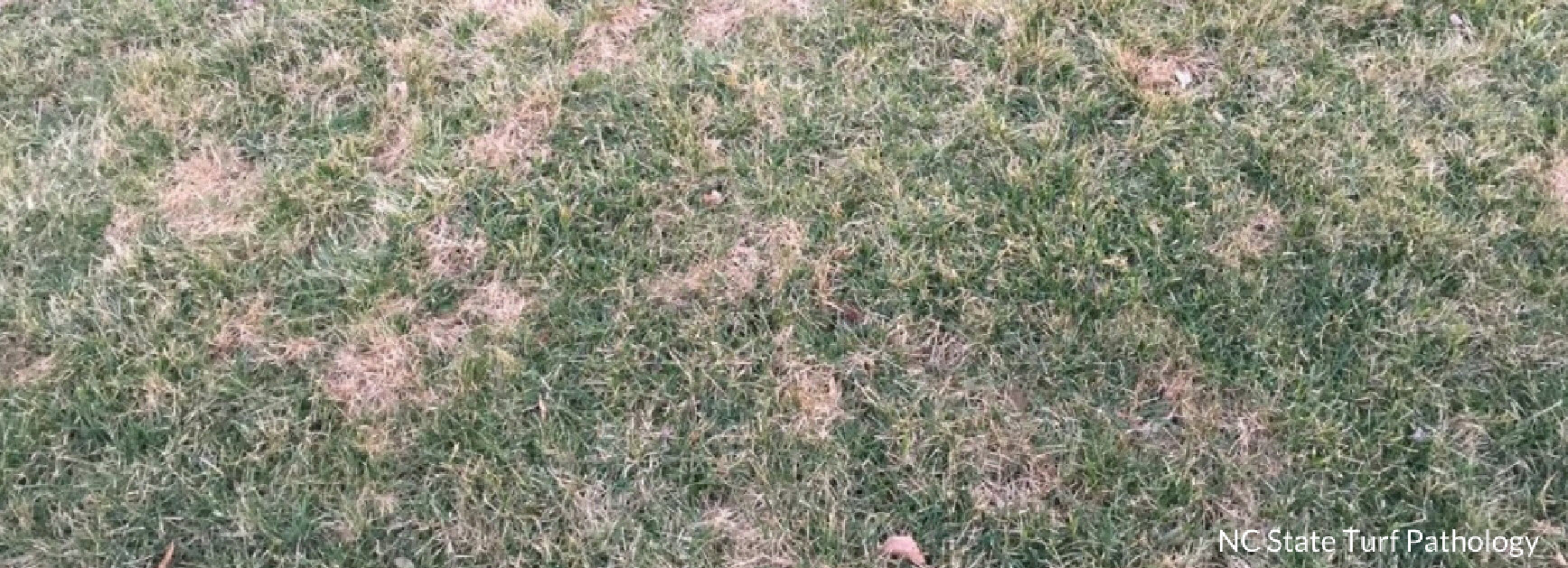How to Manage Spring Lawn Diseases and Grubs
- Milorganite AgronomistMarch 25, 2023
It’s nearly impossible to address all of the record-breaking weather conditions we’ve had this past winter, and the peculiar weather continues as we start the spring season. Depending on where you live, you may have experienced epic snow, arctic cold, freezing rain, damaging winds, or a very mild winter.
In areas where winter weather was milder than normal, you may see a few common pests and diseases showing up earlier than expected or for the first time, including grubs and snow molds.
Grubs Red Thread Grey Snow MoldPink Snow Mold
Impacts of Mild Winters on Your Lawn
Mild winters favor pests and lawn diseases that normally would be kept in check from a hard winter freeze. More pests and diseases survive in the milder temperatures, so you’ll likely see more of both, possibly sooner than expected. You may also notice pests that are normally found in warmer areas of the country.
In the fall, as temperatures fall to 32 to 50 F over a period of time, grass has time to acclimate to the cold. This helps it tolerate and survive freezing temperatures. Snow provides a protective blanket that helps insulate dormant lawns from freezing, breaking, and dehydrating (desiccating).
Mild winters can create long-term problems for lawns and landscapes, especially when the weather transitions into an unusually warm, humid spring. Grass that’s broken dormancy because of warmer temperatures can easily be damaged or killed by a sudden freeze. Repeated freeze/thaw cycles can severely compromise lawns and other landscape plants.
Be prepared to deal with spring weeds popping up earlier than usual after a mild winter and early warming.
Grubs in the Lawn
Grubs survive in warm, humid environments, which is why you may see more of them after a milder-than-normal winter and early warming in spring. They may show up sooner than their usual March to early May appearance. (Grubs are also active from mid-September to November.)

A grub is the larvae of a number of beetle species. They measure about three-quarters of an inch long. Grubs hatch from eggs laid in the soil where there’s an ample amount of organic matter, including grass roots and thatch, on which larvae can feed.
Grub damage shows up as brown patches or as thin or struggling areas of grass. To check for grubs, remove a square foot of turf to reveal the soil beneath. If there are a half-dozen or so grubs and your lawn is healthy, there’s likely no need to treat it. A healthy lawn may not prevent grubs, but it will be better able to withstand and outpace grub damage.
If you find significantly more than a half-dozen grubs, there’s a lot of lawn damage, or grubs are a recurring problem, treatment may be warranted. Use a product specific to grub control. It will take a season or two to break the grub’s lifecycle.
Good lawn maintenance practices, including dethatching and aerating your lawn, will help prevent or minimize grub activity.
Thatch is a mat of dead and living grass, including shoots, stems, crowns, and roots. About a half inch of thatch is good. It helps retain soil moisture and maintain cooler temperatures. Thatch that’s an inch or more should be removed. Thick thatch creates a barrier to water, air, and nutrients from reaching grass roots and can harbor insects, such as grubs, and fungal lawn diseases.
Aeration will help loosen soil and make it easier for water, air, and nutrients to reach grass roots. It also reduces the amount of organic matter available as food for grubs.
Spring Fungal Lawn Diseases
Fungal lawn diseases require warmth and humidity, the conditions you may find after a mild winter, less than normal snow cover, and/or an early thaw and unusually warm spring weather.
Three common fungal lawn diseases to watch out for are red thread, grey snow mold, and pink snow mold. The best way to get rid of snow mold is to reduce the conditions it needs to survive. Although it may look bad, there’s generally no need to treat or remove snow molds. They generally go away when conditions improve and the grass is actively growing. I recommend treating it only if it’s a reoccurring problem year after year. That goes for most lawn diseases.
Red Thread Lawn Disease (Cool-Season Grasses)
Red thread (Laetisaria fuciformis) is a fungal lawn disease that only impacts Northern, cool-season grasses.

Grass Species Affected
Red thread can infect all cool-season grasses, particularly fescues, Kentucky bluegrass, and Rye grass. Look for:
- pink or tan circular patches anywhere from an inch to a couple of feet in diameter, which eventually turn brown.
- pinkish-red threads that bind together leaf blades.
- threads while the lawn is wet and red-thread is most visible.
- red spores on your mower and shoes.
Timing of Red Thread
You’ll notice red thread in early spring. After a milder winter, it may appear earlier than expected. It requires air temperatures between 40 and 75 F, high humidity, and excess moisture—conditions readily found in spring and fall.
Managing Red Thread
Fungicides generally are not needed to treat red thread. Changing how you care for your lawn is the best defense.
- Water deeply and infrequently to a total of one inch of water per week, including rain.
- Water early in the morning to allow grass to dry out during the day. Watering at night keeps the turf wet and more susceptible to fungal and other diseases.
- Excess thatch can harbor fungal spores. Dethatching and aeration are the best lawn care practices to prevent red thread in the future. Bag and dispose of all material after dethatching and before aerating.
- Mow unaffected areas first, then areas with red thread to help prevent spreading the spores to areas of a healthy lawn. Bag and dispose of grass clippings in the garbage to also help prevent spores from spreading. Spores can also be spread by foot traffic.
- After mowing, clean the mower deck, underside, and blades by rinsing with water and drying with a cloth.
- Improve lawn drainage to help eliminate standing water or soggy areas, which are ideal for fungi.
- Nutrient-starved lawns contribute to the spread of red thread. Fertilize regularly with Milorganite, which contains slow-release nitrogen and phosphorus, to decrease turf susceptibility to red thread.
- After turf has gone dormant in fall, mow cool-season grasses to a height of 2 inches. Longer grass can harbor more fungi spores and mats more easily under snow cover.
Grey Snow Mold Lawn Disease (Cool-Season Grasses)
Grey snow mold (Typhula incarnata and T. ishikariensis), also known as typhula blight, is a fungal lawn disease. It requires an extended period of snow cover in mid-to-late winter for infection and patch development. Depending on the species of grey snow mold, damage can range from cosmetic to patches of grass dying.

Grass Species Affected
Grey snow mold affects all cool-season grass species. Look for:
- circular straw, light-yellow to grey patches of matted leaf blades, which may vary from a few inches to several feet in diameter and may enlarge while the turf remains cold and wet.
- a thin, fluffy covering of mycelium that looks like stretched-out cotton covering the patch.
- areas slower to green up.
Timing of Grey Snow Mold
Grey snow mold requires cool, wet conditions, generally under prolonged snow cover, as you would find along sidewalks and driveways—anywhere snow piles up. The spores remain dormant in leaf litter, thatch, and soil throughout the year. You’ll notice it in late fall through early spring. It will kill leaf blades but not the entire plant.
Managing Grey Snow Mold
- Distribute large piles of snow to encourage rapid melting.
- Gently rake the affected areas to promote drying.
- Lawns generally recover from grey snow mold when temperatures warm up, and spring growth begins.
- Fungicides are generally unnecessary to treat grey snow mold unless it’s been a problem season after season.
Prevention is the Best Way to Control Grey Snow Mold.
- Avoid an excess application of nitrogen in the fall. A slow-release, low-nitrogen fertilizer, such as Milorganite, should be used for dormant fertilization.
- Rake up leaves in the fall to avoid areas of matted, wet leaves in spring.
- Mow unaffected areas first, then areas with grey snow mold to help prevent spreading the spores to a healthy lawn. Bag and dispose of grass clippings in the garbage to also help prevent spores from spreading. Foot traffic can also spread fungi spores.
- After mowing, clean the mower deck, underside, and blades by rinsing with water and drying with a cloth.
- Regularly dethatch and aerate your lawn. Bag and dispose of material after dethatching and before aerating.
- Improve drainage to help eliminate standing water or soggy areas, which are ideal for fungi.
- After turf has gone dormant in fall, mow cool-season grasses to a height of 2 inches. Longer grass can harbor more fungi spores and mats more easily under snow cover.
Pink Snow Mold Lawn Disease (Cool-Season Grasses)
Pink snow mold (Microdochium nivale) is a common fungal lawn disease occurring in late spring to early summer during wet, rainy periods and when temperatures are 65 to 75 F. A layer of snow can seal in heat and moisture to create the ideal environment for pink snow mold to grow. These are the same conditions red thread needs, which is why both pink snow mold and red thread are often seen together.

Grass Species Affected
Pink snow mold affects all cool-season grass varieties., especially perennial ryegrass, fine fescue, and Kentucky bluegrass. Look for:
- circular or irregularly shaped, pale-yellowish to reddish patches, ranging from 3 to 12 inches in diameter, that may become white to pale pink. Affected patches typically have a pink outer ring.
- grass that has a matted appearance.
- a thin, pink, fluffy covering of mycelium that looks like stretched-out cotton covering the patch.
- areas slower to green up.
Timing of Pink Snow Mold
You’ll see pink snow mold in late fall through early spring. It doesn’t require prolonged snow cover, although snow, as well as cool, wet conditions, may enhance its development.
Managing Pink Snow Mold
Lawns generally recover from pink snow mold on its own later in the growing season.
- Distribute large piles of snow to encourage rapid melting.
- Gently rake the affected areas to promote drying.
- A fungicide application may be necessary on new lawns or those that have had a history of mold.
Prevention is the Best Way to Control Pink Snow Mold.
- Avoid excess application of nitrogen in the fall. A slow-release, low-nitrogen fertilizer, such as Milorganite, should be used for dormant fertilization.
- Rake up leaves in the fall to avoid wet patches of matted leaves in the spring.
- Regularly dethatch and aerate your lawn. Bag and dispose of material after dethatching and before aerating.
- Mow unaffected areas first, then areas with pink snow mold to help prevent spreading spores to a healthy lawn. Bag and dispose of grass clippings in the garbage to also help prevent spores from spreading.
- After mowing, clean the mower deck, underside, and blades by rinsing with water and drying with a cloth. Spores are also spread by foot traffic. Check your shoes.
- Improve drainage to help eliminate standing water or soggy areas, which are ideal for fungi.
- After turf has gone dormant in fall, mow cool-season grasses to a height of 2 inches. Longer grass can harbor more fungi spores and mats more easily under snow cover.
The turf diseases listed above are rarely detrimental to your lawn, and fungicides generally aren’t needed for treatment, which could harm the environment and simply be a waste of money. Proper lawn care is the best option for preventing and treating these common spring lawn diseases.

